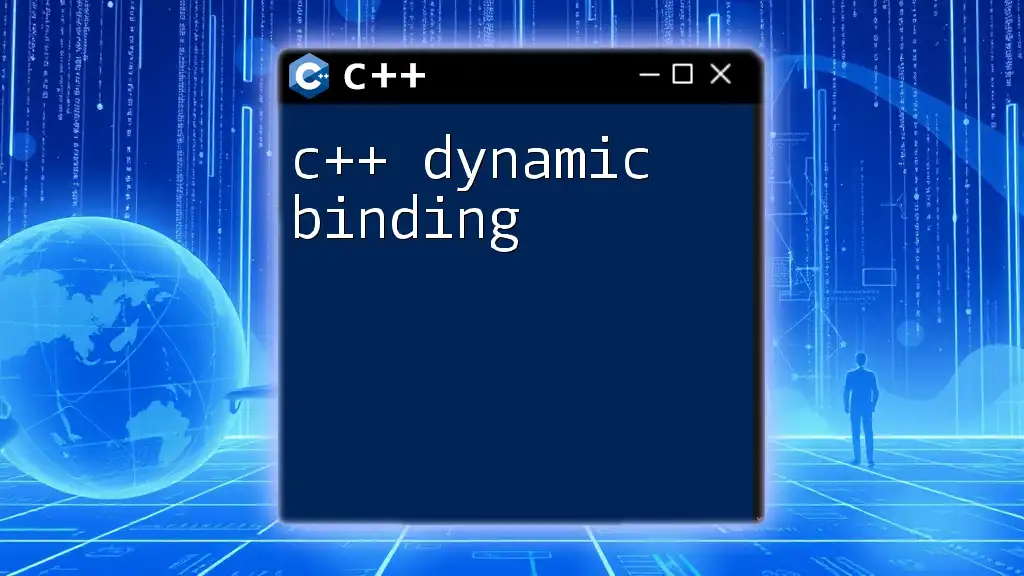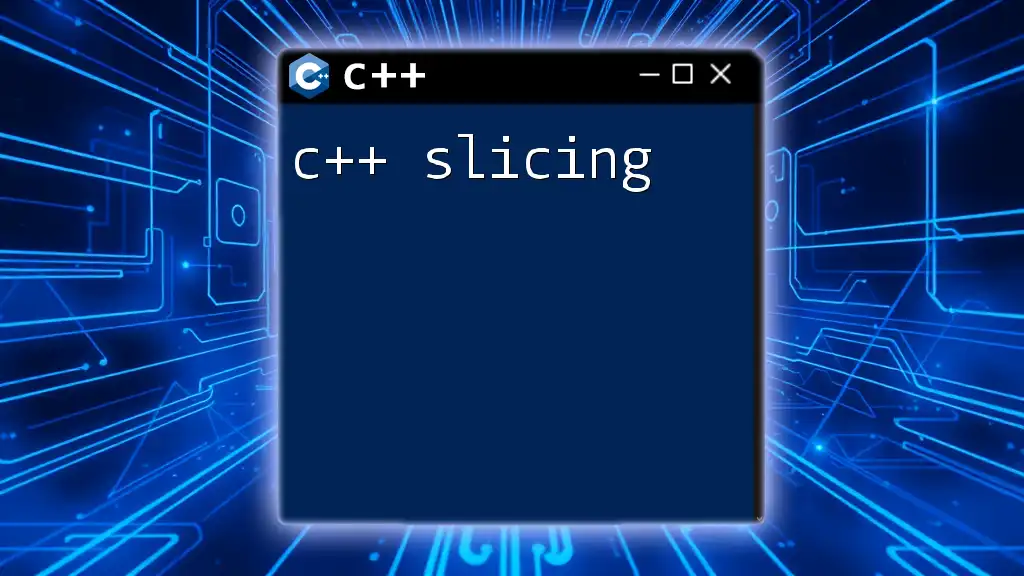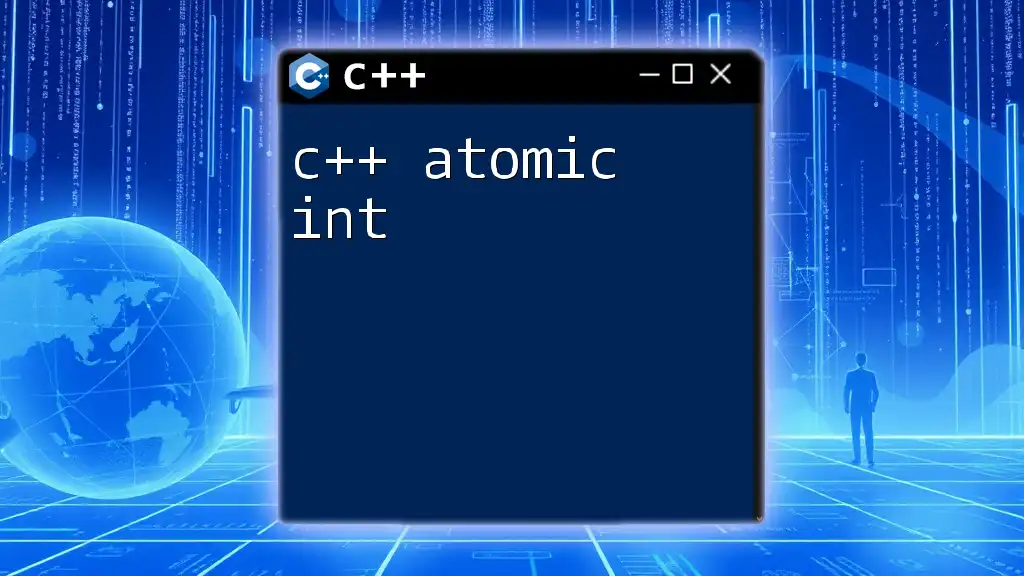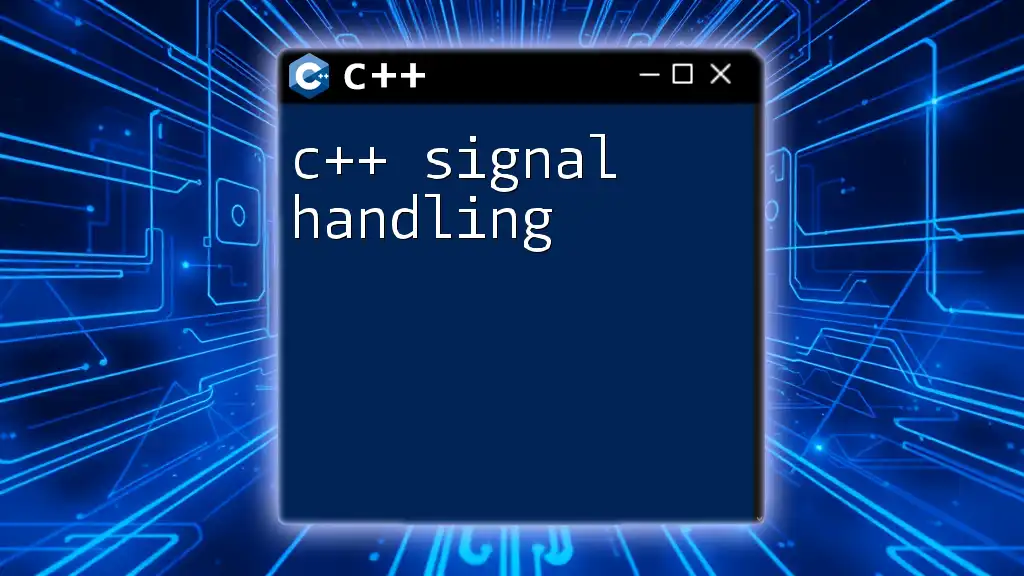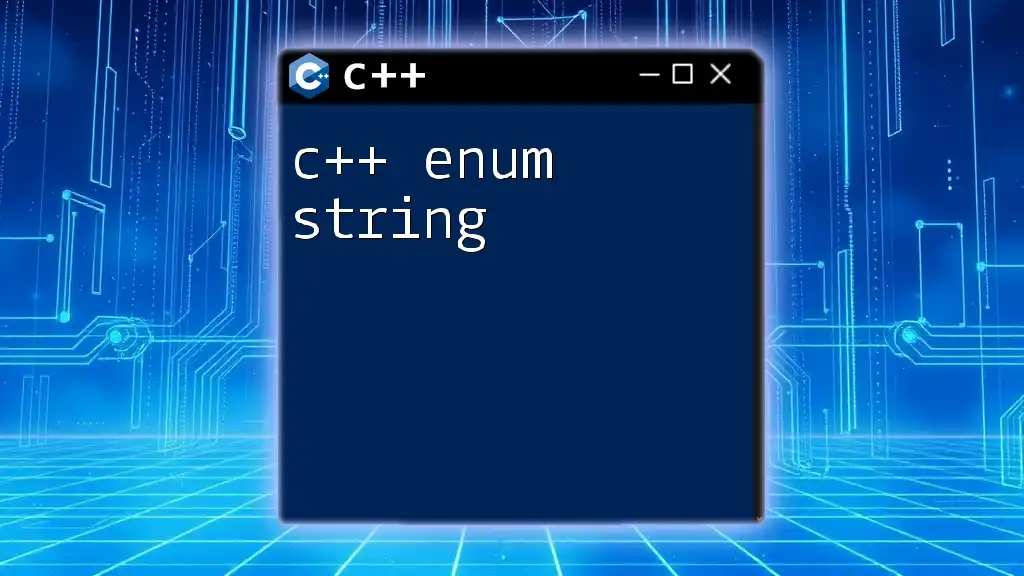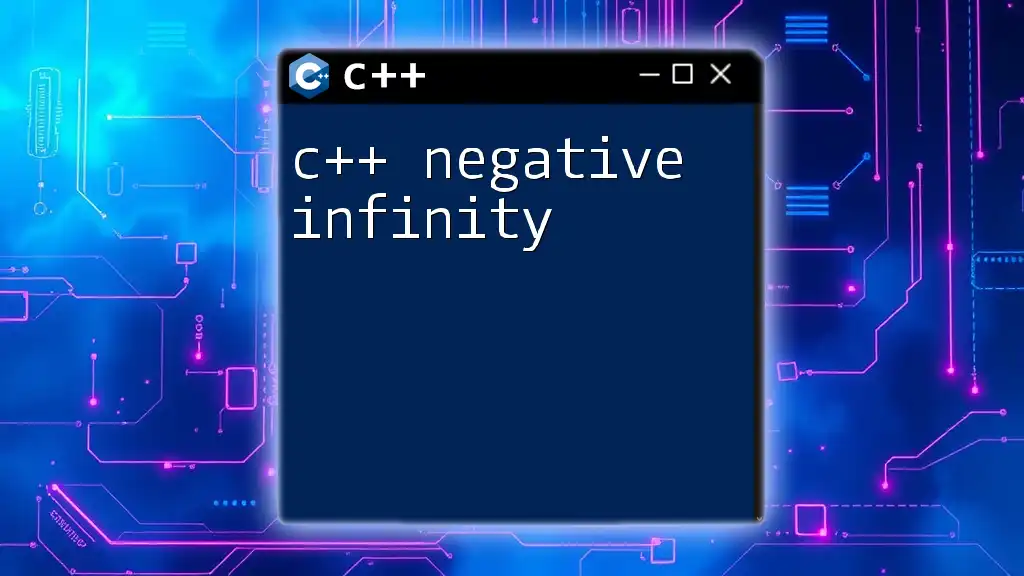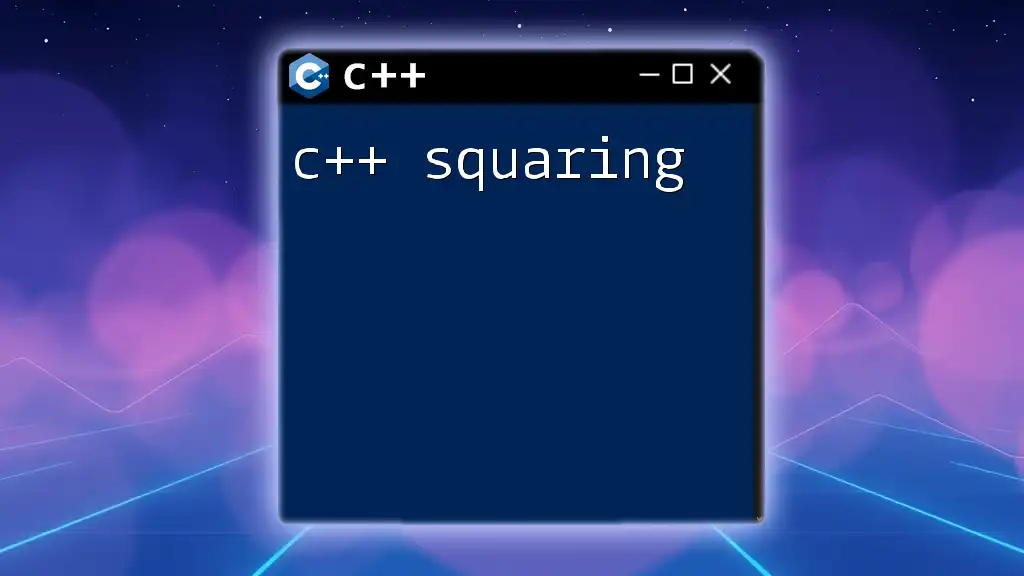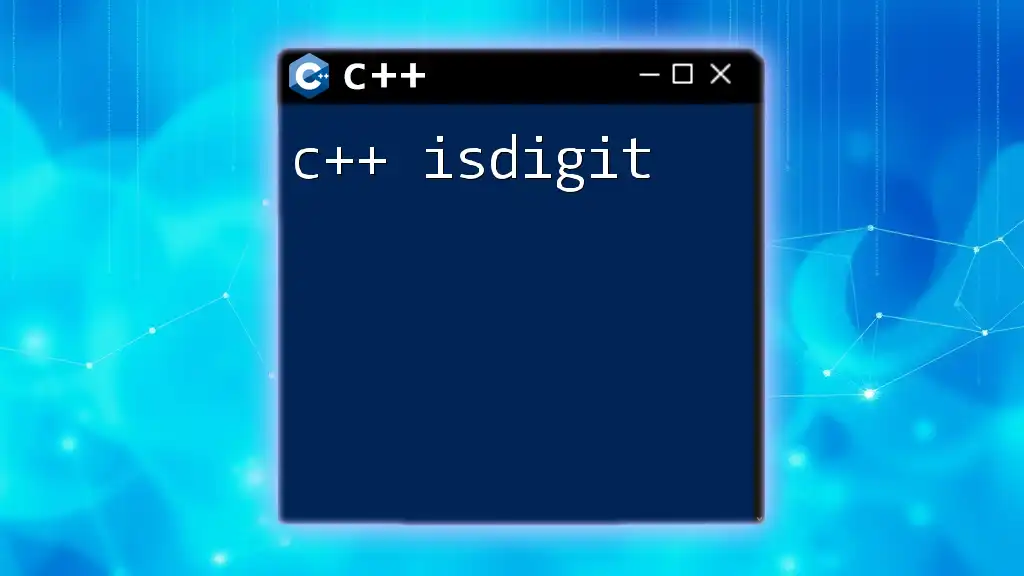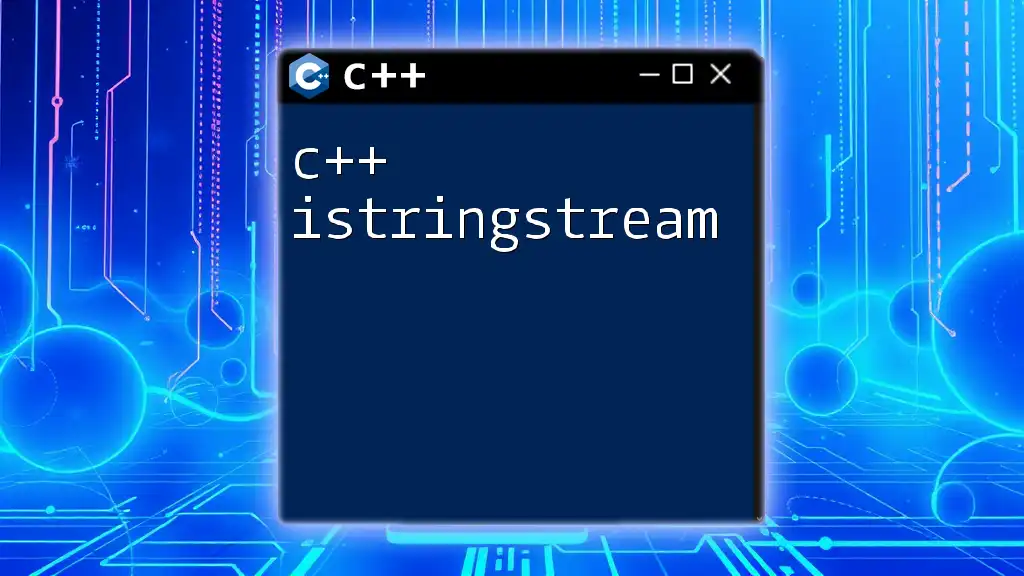Dynamic binding in C++ occurs when the method to be invoked is determined at runtime based on the object's type, allowing for polymorphic behavior in classes.
Here’s a code snippet demonstrating dynamic binding using virtual functions:
#include <iostream>
class Base {
public:
virtual void show() {
std::cout << "Base class show method called." << std::endl;
}
};
class Derived : public Base {
public:
void show() override {
std::cout << "Derived class show method called." << std::endl;
}
};
int main() {
Base* b; // Base class pointer
Derived d; // Derived class object
b = &d; // Assigning the address of derived class object
b->show(); // Calls Derived's show() method due to dynamic binding
return 0;
}
What is Dynamic Binding in C++?
Dynamic binding, also known as late binding, is a core concept in C++ that allows the program to determine which method to invoke at runtime rather than at compile time. This is a key feature that enables polymorphism, allowing for more flexible and reusable code.
Unlike static binding (or early binding), where method calls are resolved at compile time, dynamic binding associates method calls with their corresponding function implementations at runtime. This is crucial in object-oriented programming as it allows a single function to operate on different types of objects.
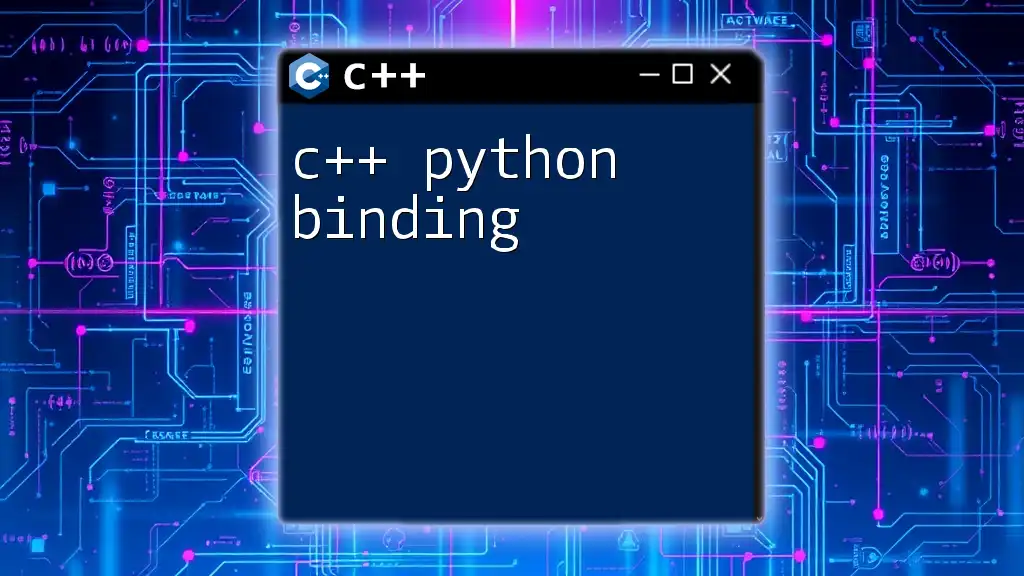
How Dynamic Binding Works
Mechanics of Dynamic Binding
Dynamic binding is made possible through a mechanism called polymorphism. When a function is declared as virtual in a base class, C++ uses a vtable (virtual table) to keep track of the functions that a derived class can override. This mechanism ensures that the correct function is called based on the type of object that the pointer or reference is pointing to at runtime.
The Role of Virtual Functions
Virtual functions are the primary means by which dynamic binding is implemented in C++. By declaring a function as virtual, you indicate that the function can be overridden in derived classes.
Here's an example of how virtual functions work in C++:
class Base {
public:
virtual void show() {
std::cout << "Base class show function called." << std::endl;
}
};
class Derived : public Base {
public:
void show() override {
std::cout << "Derived class show function called." << std::endl;
}
};
In this example, `show()` is a virtual function in the `Base` class. The `Derived` class overrides this function, providing its own implementation.
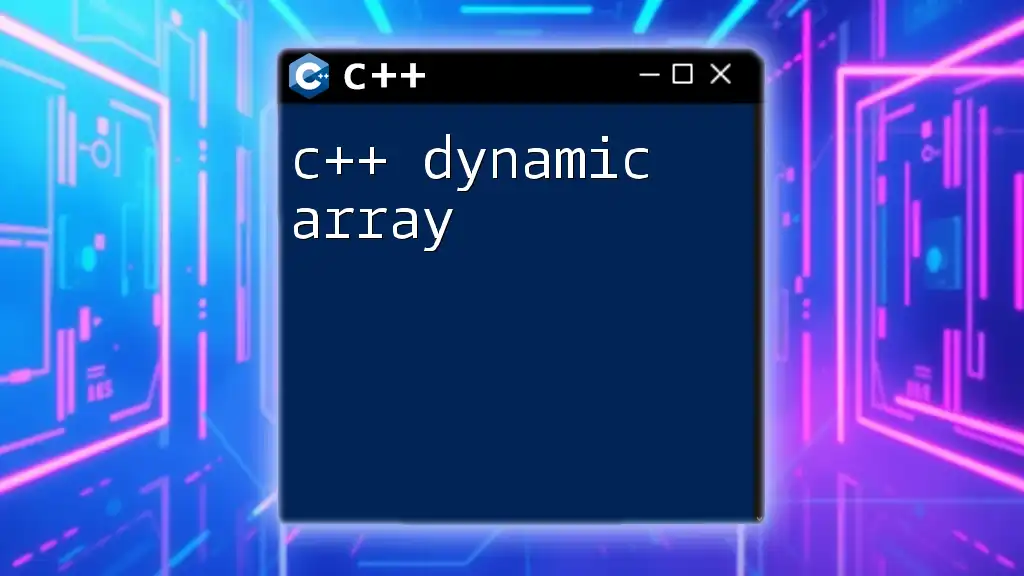
Implementing Dynamic Binding in C++
Setting Up Classes and Inheritance
To effectively use dynamic binding, you must first set up a proper class hierarchy. Here’s how you can establish a base class and a derived class:
class Base {
public:
virtual void display() {
std::cout << "Displaying Base." << std::endl;
}
};
class Derived : public Base {
public:
void display() override {
std::cout << "Displaying Derived." << std::endl;
}
};
Once you have your class structure in place, you can create a base class pointer that points to the derived class object.
Base* b; // Base class pointer
Derived d; // Derived class object
b = &d; // Pointing to derived class object
Using Virtual Functions for Dynamic Binding
To demonstrate dynamic binding, consider the following code:
b->display(); // Calls Derived's display() function, demonstrating dynamic binding
When `b->display()` is called, the program looks up the `vtable` to determine which `display()` method should be executed. Despite `b` being of type `Base*`, the actual method called is `Derived::display()` due to dynamic binding.

Advantages of Dynamic Binding
Flexibility and Reusability
Dynamic binding enhances flexibility in coding. You can write code that is applicable to multiple types without needing to know their specific implementations. This leads to more reusable code, as you create functions that operate based on interfaces rather than concrete classes.
Support for Polymorphism
Dynamic binding is essential for achieving polymorphism in C++. It allows you to handle different data types uniformly, enabling you to create classes and methods that function appropriately regardless of the specific underlying object.
Code Maintenance
Using dynamic binding increases code maintainability. By leveraging principles of abstraction and encapsulation, developers can modify or extend functionalities without altering existing codebases significantly.
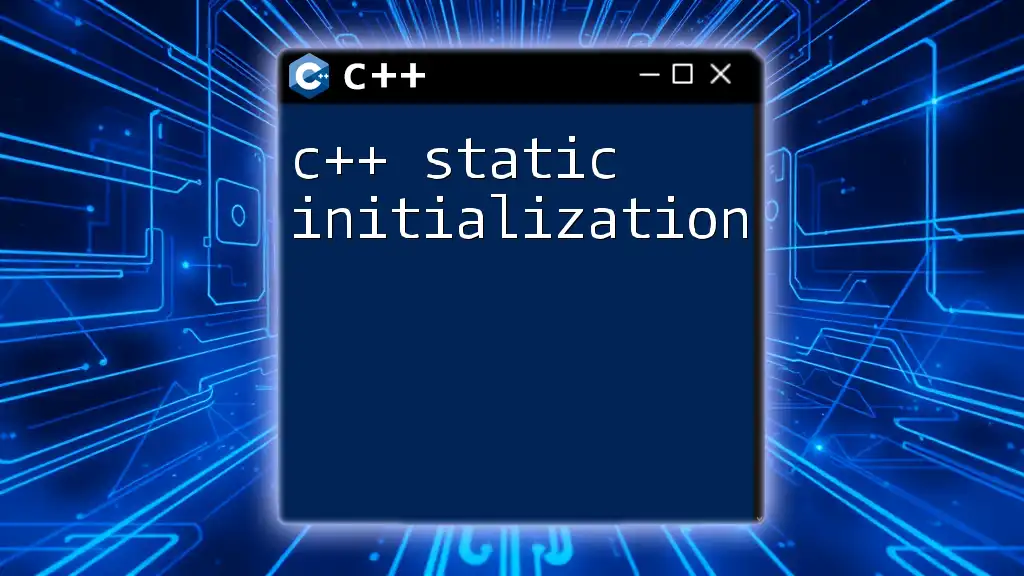
Common Use Cases of Dynamic Binding
Real-world Applications
Dynamic binding shines in applications where you need to use interfaces or abstract classes. This feature is particularly beneficial in GUI frameworks, where different components may behave in distinct ways yet share a common interface.
Design Patterns Utilizing Dynamic Binding
Several design patterns leverage dynamic binding to achieve their goals:
- Strategy Pattern: Allows algorithms to be defined at runtime, enabling clients to choose algorithms dynamically.
- Factory Pattern: Facilitates the creation of objects without specifying the exact class of object that will be created.
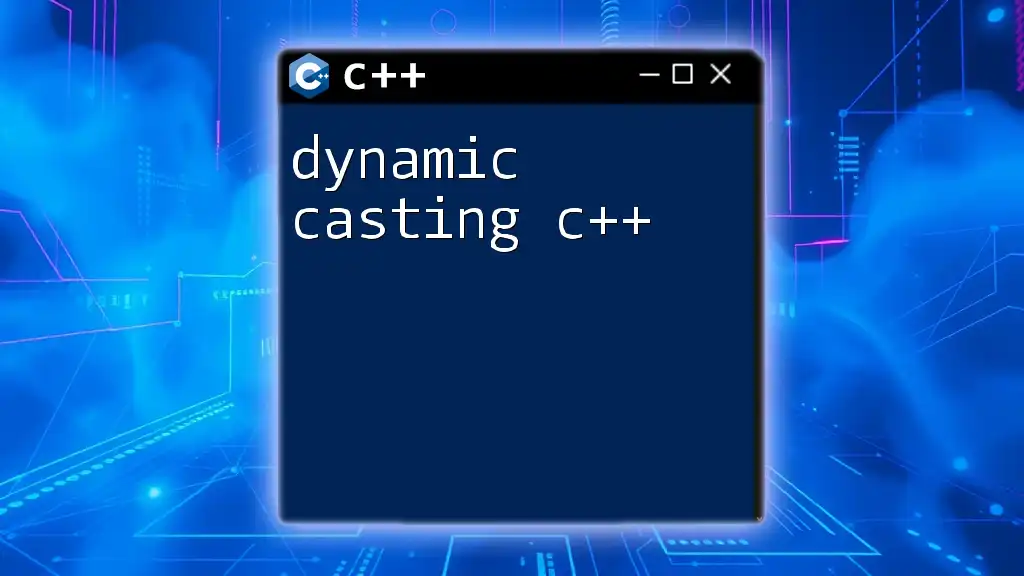
Performance Considerations
Overhead of Dynamic Binding
While dynamic binding provides great flexibility, it comes with performance overhead. The process of looking up function calls in the `vtable` introduces a slight delay compared to static calls, which can be substantial in performance-critical applications.
When to Avoid Dynamic Binding
It's generally advisable to avoid dynamic binding in performance-intensive scenarios where method calls are executed frequently and can be determined at compile time. In such cases, early binding should be preferred.
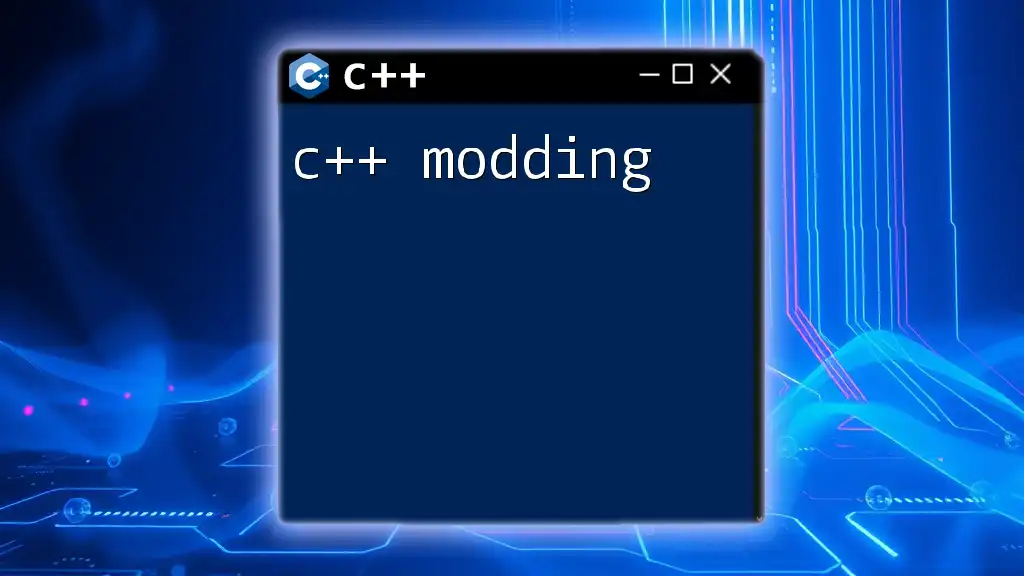
Best Practices for Working with Dynamic Binding
Choosing Between Virtual and Non-Virtual Functions
When designing classes, consider whether a function needs to be virtual. If you expect derived classes to provide specific implementations, make it virtual. Otherwise, non-virtual functions can perform better due to reduced overhead.
Use of Smart Pointers
Effective memory management is crucial when using dynamic binding, especially with object ownership. Utilize smart pointers like `std::shared_ptr` and `std::unique_ptr` to manage the lifetime of dynamic objects safely and efficiently.
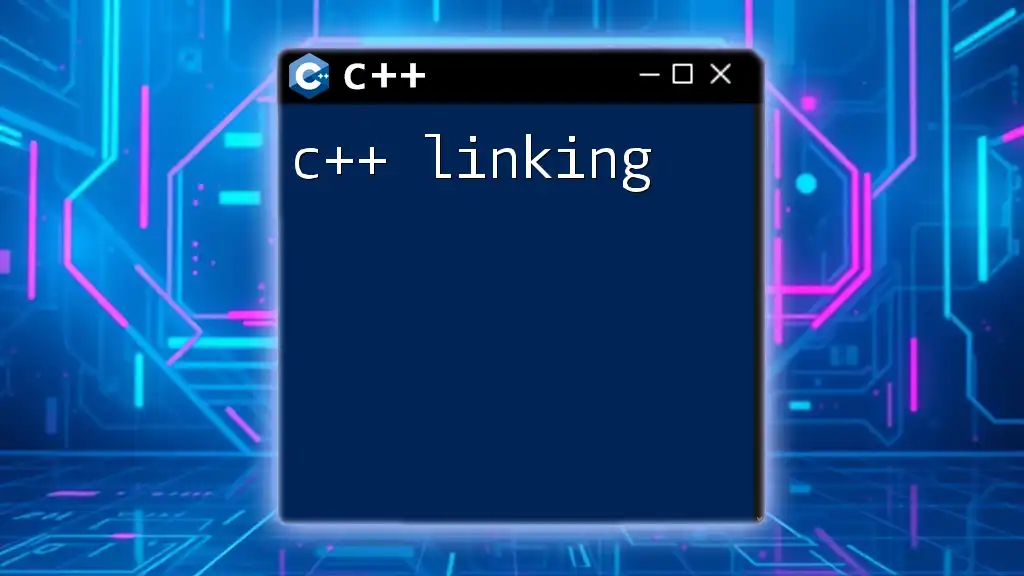
Conclusion
C++ dynamic binding is a powerful feature that enhances flexibility, supports polymorphism, and contributes to code maintainability. By understanding and effectively utilizing dynamic binding, developers can write robust and adaptable code that can evolve with changing requirements.
Encouraging further exploration into C++ dynamic binding opens doors to a deeper understanding of object-oriented programming principles, ultimately leading to improved programming practices and software design.
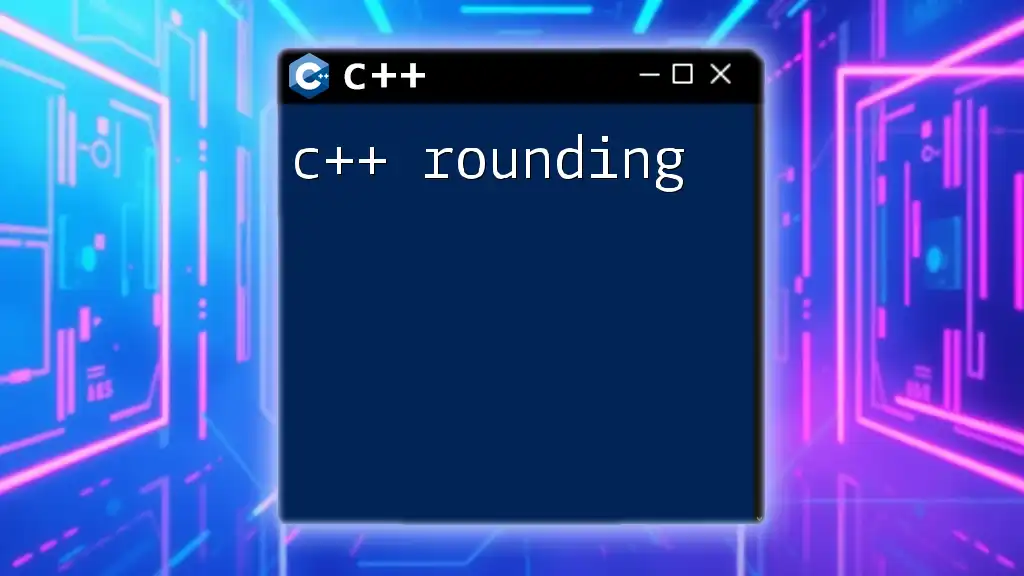
Additional Resources
For those looking to delve deeper into C++ and its dynamic binding capabilities, consider consulting books like "The C++ Programming Language" by Bjarne Stroustrup, or exploring online courses focused on object-oriented programming in C++. Additionally, the official C++ documentation provides invaluable insights and examples to enhance your understanding of dynamic binding concepts.

